Table of Contents |
Because fiber-optic cable transmits digital signals using light impulses rather than electricity, it is immune to electromagnetic interference (EMI) and radio frequency interference (RFI). Fiber-optic cable allows light impulses to be carried through either a glass or a plastic core. Glass can carry the signal a greater distance, but plastic is cheaper. In both types, the core is surrounded by a glass or plastic cladding with a different refraction index that reflects the light back into the core. Around this is a layer of flexible plastic buffer that can be wrapped in an armor coating, usually Kevlar, which is then sheathed in PVC or FEP.
The cable itself is available as either single-mode fiber (SMF) or multimode fiber (MMF); the difference between them is in the number of light rays (the number of signals) they can carry. Multimode fiber is most often used for shorter-distance applications and single-mode fiber for longer distances.
Here are the pros:
Single-mode fiber (SMF) is a very high-speed, long-distance medium that typically consists of a single strand of glass fiber that carries signals. Light-emitting diodes (LEDs) and lasers are the light sources used in SMF. The light source is transmitted from end to end and pulsed to create communication. This type of fiber cable is employed to span really long distances, because it can transmit data 50 times farther than MMF and at a higher transmission rate.
Because the transmission medium is glass, the installation of SMF can be complicated. Although the outer layers protect the glass core, the cable should still not be crimped or pinched around any tight corners.
Multimode fiber (MMF) also uses light to communicate a signal. However, the light is dispersed in numerous paths as it travels through the core and is reflected back. A special material called cladding is used to line the core and focus the light back onto it. MMF provides high bandwidth at high speeds over medium distances (up to about 3,000 ft), but beyond that, it can be unreliable. This is why MMF is most often used within a smaller area of one building. On the other hand, SMF can be used between buildings.
MMF is available in a glass or plastic version that makes installation a lot easier and increases the installation’s flexibility.
We will now discuss the various types of connectors used with fiber-optic cabling. It is important for networking professionals to recognize the common types of connectors, particularly when ordering cables and switches for an enterprise.
The choice between angled physical contact (APC) and ultraphysical contact (UPC) can have a significant effect on how your network will perform. APC connectors have a fiber endface that is polished at an 8° angle, while the UPC is an ultrapolished surface with no angle and, as such, is perfectly straight.
The angled-polished connector is cut at an 8° angle. With the UPC, the light is reflected back down to the core of the fiber cable, which causes a loss of dB (decibel), called a return loss. The angled connector causes the light to reflect back into the cladding, which is the plastic sheath around an optical fiber, instead of the glass core. But the APC does not cause nearly as much dB loss as the UPC.
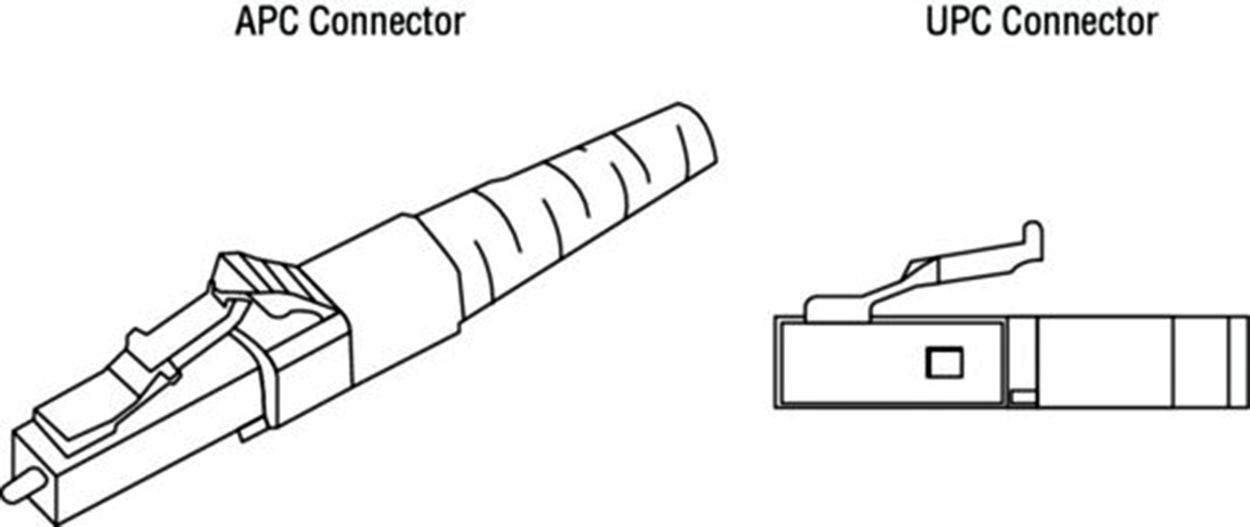
Several different types of connectors are available to use with fiber-optic cables, but the two most popular ones are the straight tip (ST) and the subscriber (or square) connector (SC).
ST Connector
The ST fiber-optic connector was developed by AT&T, and it is one of the most widely used fiber-optic connectors. It uses a BNC attachment mechanism similar to Thinnet that makes connections and disconnections fairly easy. In fact, this feature makes this connector very popular. The photo below shows an example of an ST connector. Notice the BNC attachment mechanism.
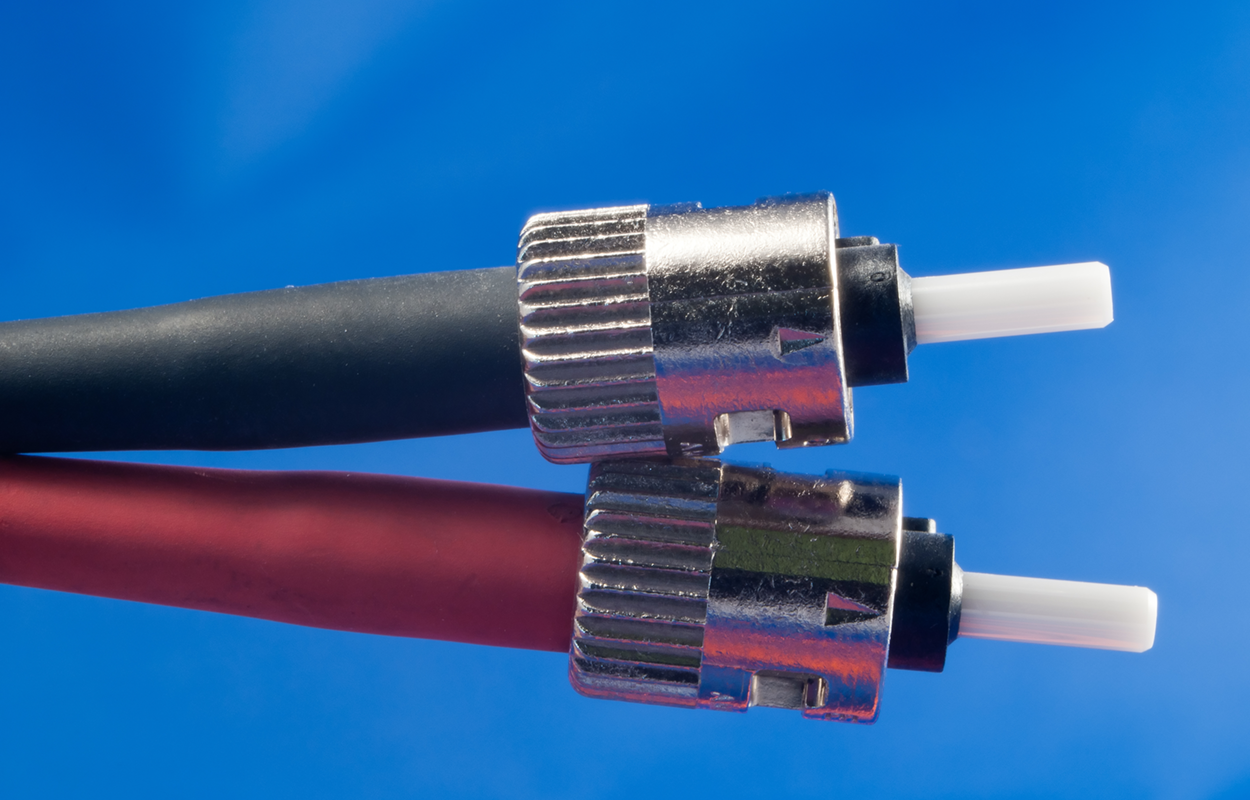
SC Connector
The SC connector is another type of fiber-optic connector. As you can see in the photo below, SC connectors are latched by a mechanism that holds the connector securely and prevents it from falling out.
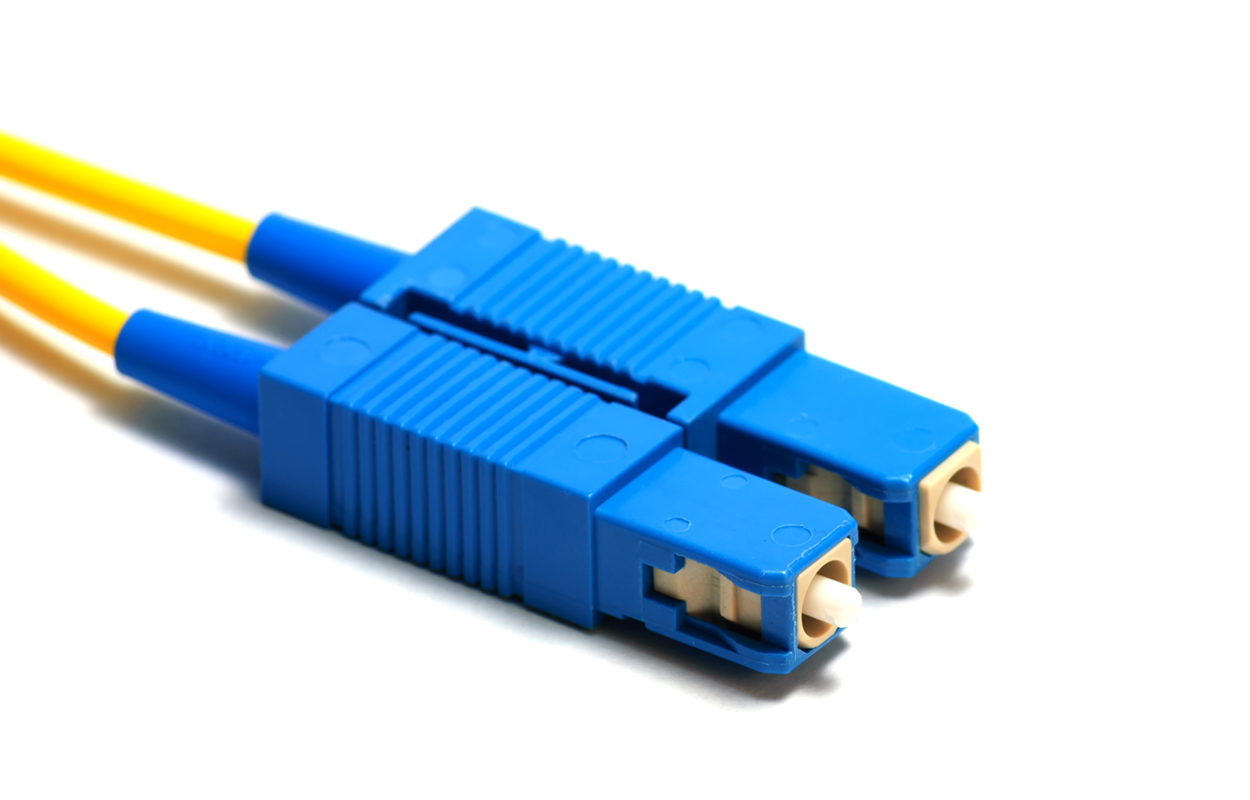
An SC APC connector is polished to an 8° angle, whereas an SC UPC connector is polished flat (no angle), which creates a difference in light reflection. SC connectors work with both single-mode and multimode optical fibers and will last for around 1,000 insertions. They are being used more now, but they are still not nearly as popular as ST connectors for LAN connections. You can also get a fiber coupler to connect an ST connector to an SC connector, for example, but you will lose a lot of your power (dB) if you do so.
FC Connector
Another type of connector is the FC connector or field assembly connector, also called the ferrule connector, which is not very popular. It is still used in telecommunications and measurement equipment with single-mode lasers, but the SC is more popular. FC connectors look identical to ST connectors.
Fiber Distribution Panel
Fiber distribution panels (FDPs) are termination and distribution systems for fiber-optic cable facilities. They consist of a cable management tray and a splice drawer. They are designed for the central offices, remote offices, and LANs of telecommunications carriers using fiber-optic facilities.
Fiber-Optic Transceivers
Fiber-optic transceivers can be either unidirectional (simplex) or bidirectional (duplex). Let us look at both standards.
Bidirectional Communication
Bidirectional communication is possible if the cable used follows the IEEE 802.3ah 1000BASE-BX10-D and 1000BASE-BX10-U standards. Communication over a single strand of fiber is achieved by separating the transmission wavelength of the two devices, as depicted below. Think of it simply as, for example, blue light traveling in one direction and red light traveling in the other direction.

Small Form Factor
Another type of fiber-optic connector is the small form factor (SFF) connector, which allows more fiber-optic terminations in the same amount of space than its standard-sized counterparts. The two most popular versions are the mechanical transfer registered jack (MT-RJ) designed by AMP and the Local Connector (LC) designed by Lucent.
The image below is an example of an MT-RJ fiber-optic connector.
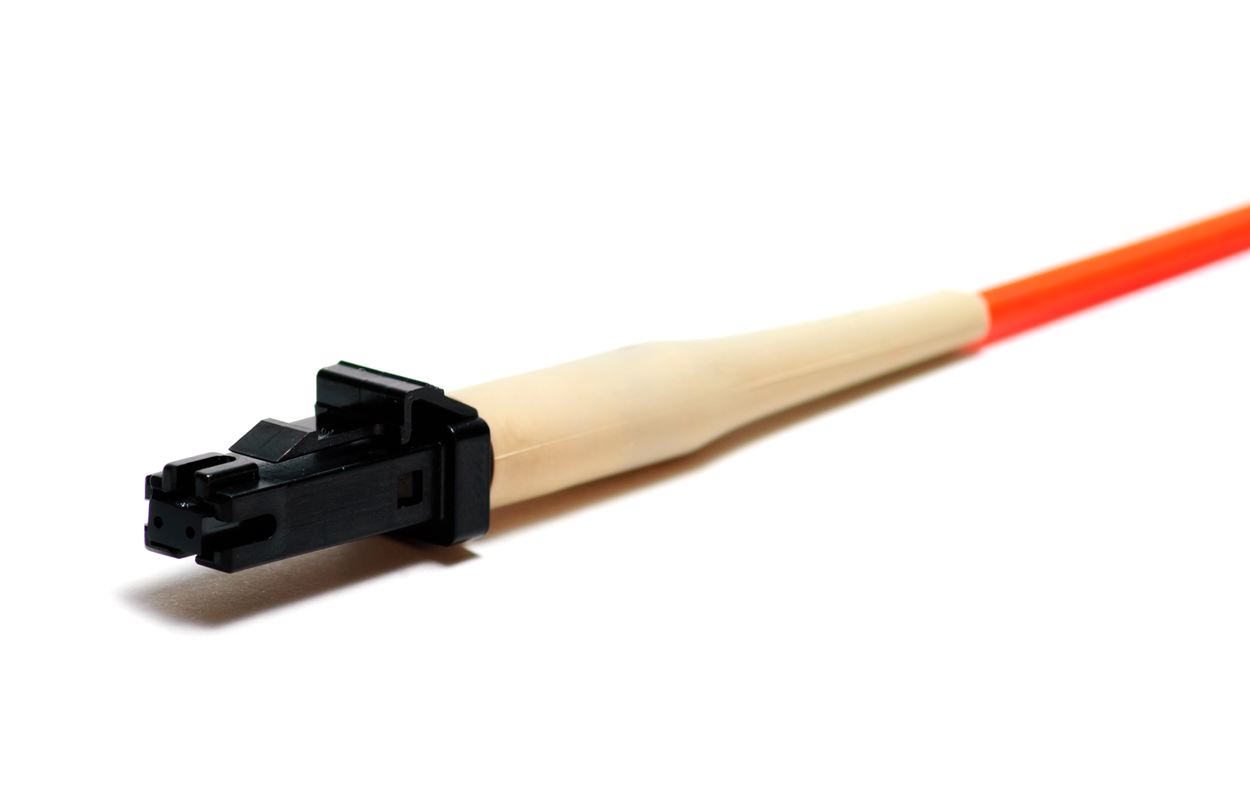
LC Connector
LC is a newer style of an SFF fiber-optic connector that is surpassing the MT-RJ. It is especially popular for use with Fiber Channel adapters (FCs) and is a standard used for fast storage area networks and Gigabit Ethernet adapters. The photo below depicts an example of an LC connector.
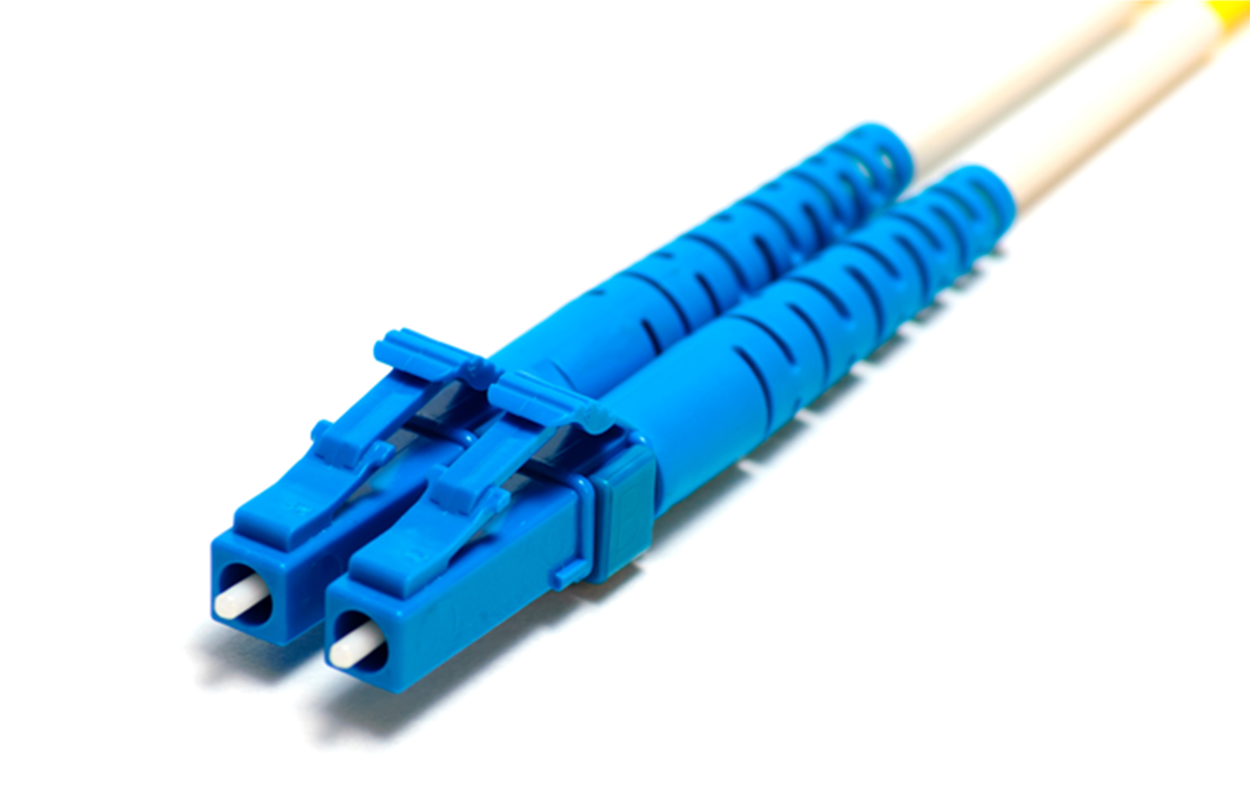
IN CONTEXT
Should We Use Copper or Fiber?
If your network runs are measured in miles, fiber optic is your cable of choice because copper cannot give you more than about 1,500 ft without electronics regenerating the signal. The standards limit UTP to a relatively short 328 ft.
Another good reason to opt for fiber is it offers high security, because it does not create a readable magnetic field. Although fiber-optic technology was initially very expensive and challenging to work with, it is now commonly used for Gigabit or 10-GB internet backbones.
Ethernet running at 10 Mbps over fiber-optic cable to a desktop is indicated by 10BaseFL. The 100-Mbps version of this implementation is 100BaseFX. The “L” in the 10-Mbps version stands for “link.” The other designations are “B” for “backbone” and “P” for “passive.”
A transceiver is a device composed of both a transmitter and a receiver, which are combined and share common circuitry and a single housing. The term commonly applies to wireless communications devices such as cellular telephones, cordless telephone sets, handheld two-way radios, and mobile two-way radios. Occasionally, the term is used in reference to transmitter and receiver devices in cable or optical fiber systems.
The small form-factor pluggable (SFP) is a compact, hot-pluggable optical module transceiver used for both telecommunications and data communications applications. The SFP+ transceiver is an enhanced version of the SFP that supports data rates up to 16 Gbit/s.
The Quad Small Form-Factor Pluggable (QSFP) is another compact, hot-pluggable transceiver used for data communications applications. It interfaces networking hardware, such as servers and switches, with a fiber-optic cable or active or passive electrical copper connection. It allows data rates from four channels of 1 Gigabit per second (Gbps) for QSFP, four channels of 10 Gbps for QSFP+, and four channels of 28 Gbps (the highest rate), known as QSFP28, used for 100-Gbps links.
Source: This content and supplemental material has been adapted from CompTIA Network+ Study Guide: Exam N10-007, 4th Edition. Source Lammle: CompTIA Network+ Study Guide: Exam N10-007, 4th Edition - Instructor Companion Site (wiley.com)